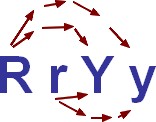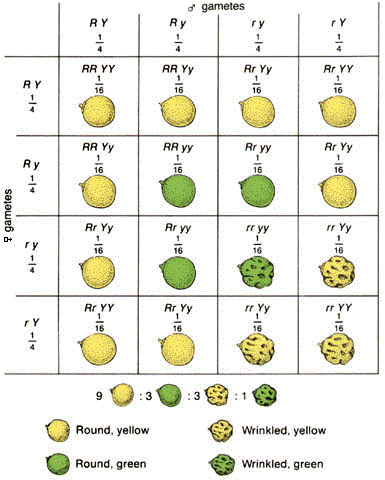how to find the genotype of a dihybrid cross?
These type of crosses can be challenging to set up, and the square you create will be 4x4. This simple guide will walk you through the steps of solving a typical dihybrid cross common in genetics. The method can also work for any cross that involves two traits.
Consider this crossA pea plant that is heterozygous for round, yellow seeds is self fertilized, what are the phenotypic ratios of the resulting offspring?
Step 1: Determine the parental genotypes from the text above, the word "heteroyzous" is the most important clue, and you would also need to understand that self fertilized means you just cross it with itself.
RrYyxRrYy
Step 2: Determine the gametes. This might feel a little like the FOIL method you learned in math class. Combine the R's and Ys of each parent to represent sperm and egg. Do this for both parents


Gametes after "FOIL"
RY, Ry, rY, ry(parent 1) andRY, Ry, rY, ry(parent 2)
Step 3: Set up a large 4x4 Punnet square, place one gamete set from the parent on the top, and the other on the side

Step 4: Write the genotypes of the offspring in each box and determine how many of each phenotype you have. In this case, you will have 9 round, yellow; 3 round, green; 3 wrinkled, yellow; and 1 wrinkled green
Some ShortcutsIn any case where the parents are heterozygous for both traits (AaBb x AaBb) you will always get a 9:3:3:1 ratio.
9 is the number for the two dominant traits, 3 is the number for a dominant/recessive combination, and only 1 individual will display both recessive traits.
Another way to determine the ratios is to do it mathematically
3/4 of all the offspring will have round seeds3/4 of all the offspring will have yellow seeds
3/4 x 3/4 = 9/16 will have round, yellow seeds.
Crosses that Involve 2 TraitsConsider:RrYyxrryy
The square is set up as shown



